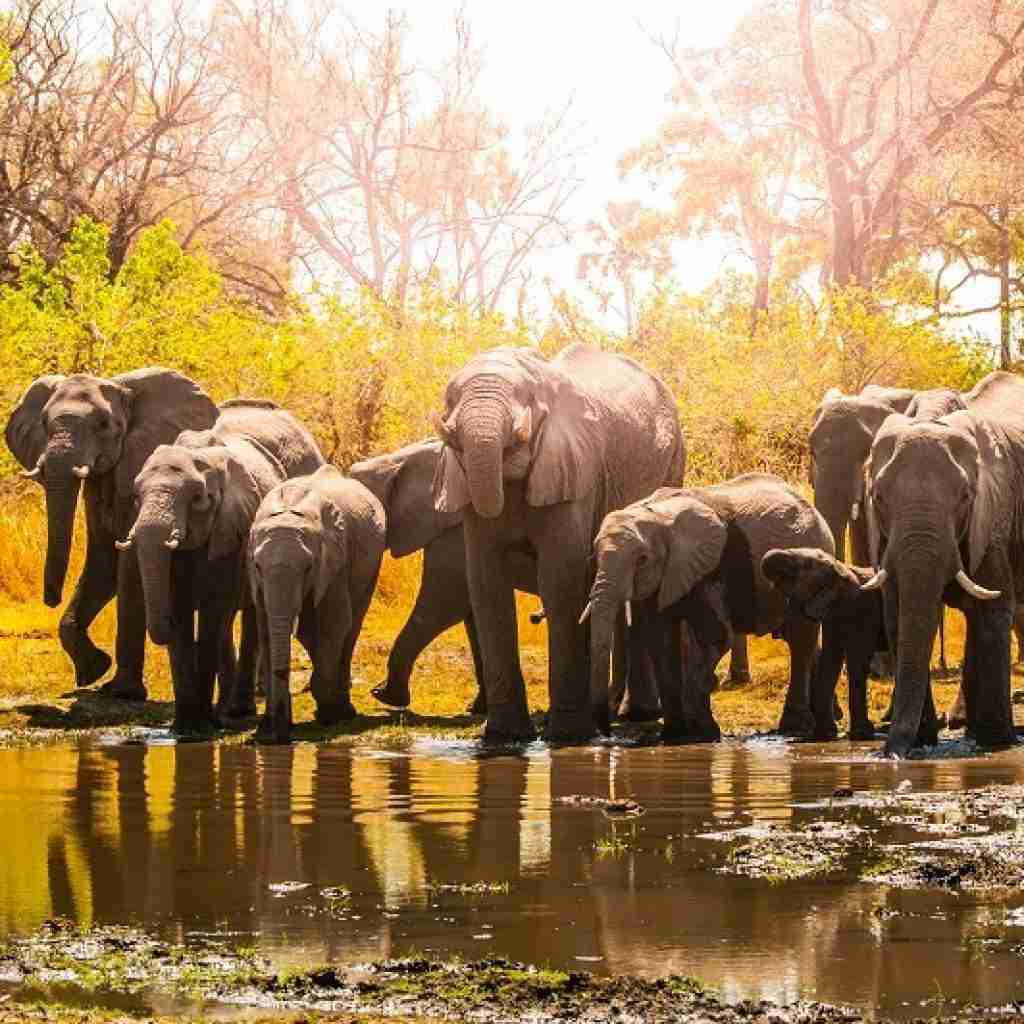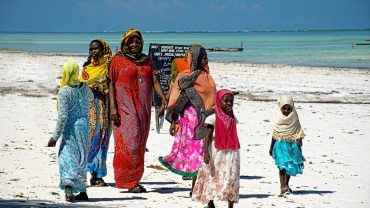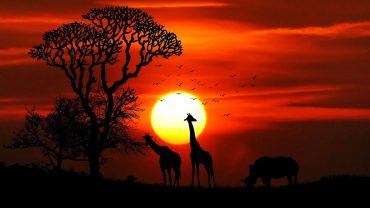Chobe è stato il primo parco nazionale mai fondato in Botswana e il terzo più grande del Paese. La magia di questo luogo verde, situato all’estremo nord della nazione, è la popolazione di leoni ed elefanti che è l’attrazione principale per i turisti. Un safari a Chobe significa ammirare incredibili scene di caccia, con i leoni che inseguono piccoli elefanti, o animali malati, o scappano dall’attacco di grandi gruppi di elefanti adulti. È molto eccitante ammirare la fauna selvatica a Chobe, vale il viaggio. Il parco, fondato nel 1967, si estende per 11.700 kmq di superficie, ed è suddiviso in 4 aree, ognuna con una tipica caratteristica geografica.
Esplorando il Parco Nazionale del Chobe
Iniziamo la nostra visita al Chobe National Park da Serondela Riverfront. Questa prima area, posta a nord, è prevalentemente una pianura alluvionale verdeggiante con boschi di mogano, praterie, fiumi e stagni. Andando verso ovest, il territorio si trasforma in un’immensa palude, Savuti. La regione di Savuti un tempo era un grande lago, poi prosciugato da spostamenti di faglie che hanno lasciato solo stagni e acquitrini. Alberi morti e fango ricoprono circa 10.800 kmq.
La palude si trasforma in una laguna mentre ci si avvicina alla Riserva di Selinda, vicino all’area chiamata Linyanti. Il territorio è di nuovo pianure alluvionali e boschi, qui dimora di molti animali. Tra il lungofiume e la palude, c’è una vasta regione secca dove l’unica vegetazione che vedrete sono arbusti ed erba ingiallita.

Fauna selvatica a Chobe
Ogni singola area del Parco Nazionale di Chobe ospita animali specifici, alcuni tra i più belli dell’Africa. Questo è il paradiso dei safari perché qui abita la fauna tipica africana e le condizioni del territorio consentono alle persone di avvicinarsi ad essa, mentre vive nel proprio habitat. Nei boschi di Serondela Riverfront si possono incontrare elefanti, giraffe e bufali che vivono lungo le rive del fiume Chobe. Questa è anche la casa di antilopi e di molti uccelli, in particolare uccelli acquatici.
A Savuti vivono gnu, zebre, impala e rinoceronti. Qui potrete vedere i leoni che inseguono elefanti, e anche iene e ghepardi che cercano di fare il loro ruolo! Le paludi di Linyanti e Selinda ospitano coccodrilli e ippopotami, mentre leopardi, antilopi e licaoni corrono lungo le sponde. Non molti turisti amano visitare l’arido entroterra, quindi le bestie feroci del luogo – principalmente antilopi – vivono libere.
Altro da vedere al Chobe National Park
Un luogo molto interessante al Chobe National Park sono le colline rocciose dei territori interni. Lì potreste visitare le grotte dove sono ancora visibili dipinti tribali preistorici. Sono l’eredità culturale degli uomini che vivevano in questa regione, molto prima che il Botswana esistesse come nazione. Erano la tribù dei Boscimani San, o popolo Basarwa.
I moderni abitanti della regione vivono ai confini del parco, o nell’unica città situata al suo interno, nella zona di Serondela, per l’esattezza: Kasane, la città dei lodge turistici e dei coccodrilli!
Informazioni sul Parco
Molte strade del Parco Nazionale di Chobe sono sabbiose o fangose. Quando piove, è impossibile guidare attraverso la regione. È necessario assumere una guida o un tour operator con un’auto jeep 4×4, oppure noleggiare una jeep da soli. Kasane è la città di riferimento per qualsiasi safari, viaggio o escursione nel Parco. C’è una strada diretta che collega Kasane con Chobe, in particolare tramite l’accesso di Savuti, e con la zona arida attraverso l’accesso di Nogatsaa.
Per arrivare a Kasane, e al Parco, si può percorrere l’autostrada che lo collega con Francistown e Gaborone. Oppure prendere un volo nazionale da Gaborone per atterrare all’aeroporto di Kasane.






Comment (0)